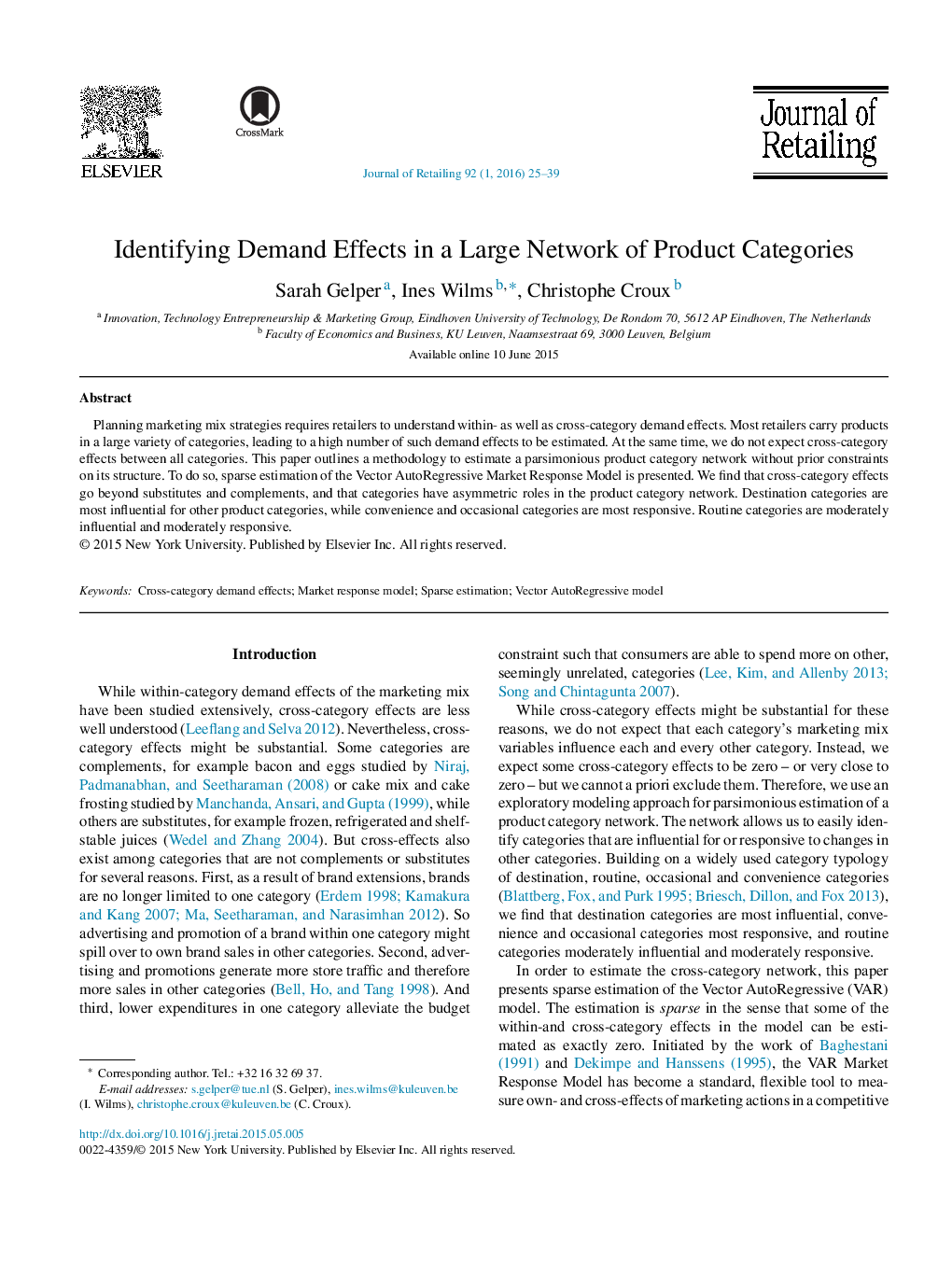| Article ID | Journal | Published Year | Pages | File Type |
|---|---|---|---|---|
| 886235 | Journal of Retailing | 2016 | 15 Pages |
•We study cross-category demand effects in a large product category.•We position category types according to their influence and responsiveness.•To this end, we use sparse estimation of the Vector AutoRegressive Model.•Destination categories are very influential, convenience categories very responsive.
Planning marketing mix strategies requires retailers to understand within- as well as cross-category demand effects. Most retailers carry products in a large variety of categories, leading to a high number of such demand effects to be estimated. At the same time, we do not expect cross-category effects between all categories. This paper outlines a methodology to estimate a parsimonious product category network without prior constraints on its structure. To do so, sparse estimation of the Vector AutoRegressive Market Response Model is presented. We find that cross-category effects go beyond substitutes and complements, and that categories have asymmetric roles in the product category network. Destination categories are most influential for other product categories, while convenience and occasional categories are most responsive. Routine categories are moderately influential and moderately responsive.
Graphical abstractFigure optionsDownload full-size imageDownload as PowerPoint slide
